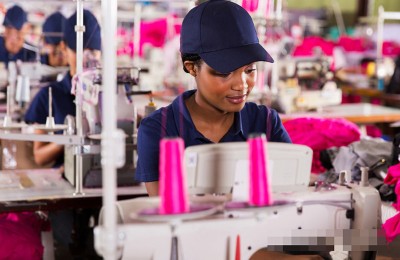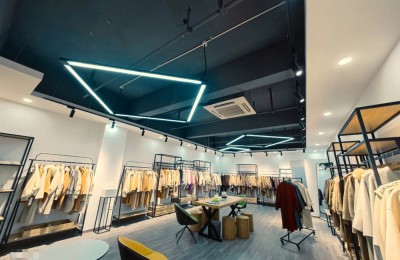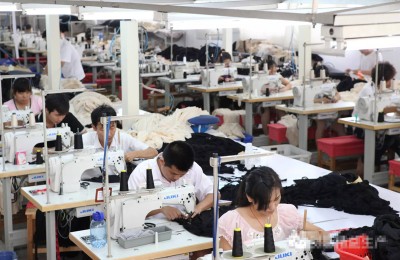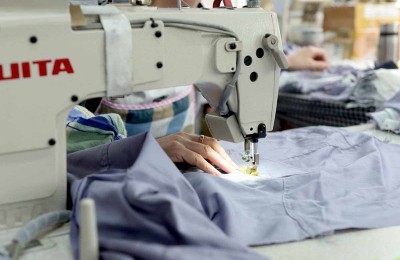Analysis of the market development status of China’s apparel industry in 2020
In recent years, my country’s clothing consumption has shifted from a single consumption demand of covering the body and keeping out the cold to a consumption trend of fashion, culture, brand and image. The clothing industry is facing transformation and upgradingPressure, the growth rate of industrial scale continues to decline. In 2019, my country achieved a clothing output of 24.472 billion pieces and industry revenue of 1.6 trillion yuan.
Clothing output reached 24.472 billion pieces in 2019
In recent years, my country’s clothing consumption has shifted from a single consumption demand of covering the body and keeping out the cold to a consumption trend of fashion, culture, brand and image. The clothing industry is facing the pressure of transformation and upgrading, and the growth rate of industrial scale has been declining. In 2019, clothing production rebounded slightly.
According to data from the National Bureau of Statistics, from January to December 2019, enterprises above designated size in my country’s garment industry completed a total of 24.472 billion pieces of clothing, a year-on-year increase of 3.28%.
The retail sales of clothing products in 2019 reached 977.81 billion yuan
Judging from the scale of domestic sales in the industry, from 2014 to 2019, my country’s overall clothing retail sales showed fluctuating changes. According to data from the National Bureau of Statistics, from January to December 2019, the total retail sales of consumer goods was 41,164.9 billion yuan, a year-on-year increase of 8.0%. Among them, the retail sales of clothing products by units above designated size totaled 977.81 billion yuan, a year-on-year increase of 2.6%.
In addition, according to data from the National Bureau of Statistics, in 2019, the national online retail sales of physical goods was 8,523.95 billion yuan; among the online retail sales of physical goods, wearable goods increased by 15.4% year-on-year.
IndustryExport is gradually shrinking
Judging from the export scale of the clothing industry, China is undoubtedly a major clothing exporter. The annual clothing export value exceeds 100 billion US dollars, which is far greater than the clothing import value. However, in recent years, the amount of China’s clothing exports has been gradually shrinking. According to statistics from the General Administration of Customs of China, the scale of China’s clothing exports is gradually declining from 2014 to 2019. As of the end of December 2019, my country’s total exports of clothing and accessories reached US$151.37 billion, a year-on-year decrease of 4.08%.
In 2019, the industry achieved revenue of 1.6 trillion yuan
In 2019, the overall operation of the industry is under pressure. According to data from the National Bureau of Statistics, from January to December 2019, enterprises above designated size in the clothing industry achieved a cumulative operating income of 1,601.033 billion yuan, a year-on-year decrease of 3.45%; a total profit of 87.283 billion yuan, a year-on-year decrease of 9.75%; the operating income profit margin was 5.45%. A decrease of 0.38 percentage points from the same period in 2018; the gross profit margin was 15.04%, an increase of 0.21 percentage points from the same period in 2018; the three-fee ratio was 8.91%, an increase of 0.20 percentage points from the same period in 2018.
The situation of resumption of work has improved
In order to further understand the impact of the COVID-19 epidemic on the production and operation of my country’s garment enterprises and the progress of their resumption of work, the China National Garment Association conducted a questionnaire survey on the resumption of work of garment enterprises in the second phase among member companies from February 27th to 28th. As of 10:00 on February 29, the association has received a total of valid questionnaires from 325 companies and 14industrial clusters. Judging from the feedback information, the resumption of work and production of garment enterprises has generally shown a positive trend. The number of workers returning to work accounts for an increase in the number of workers employed under normal production conditions compared with the previous period, but it still faces many problems such as worker shortages, unsynchronized resumption of work by upstream and downstream enterprises in the industrial chain, reduced orders due to market downturn, poor transportation and logistics, and lack of protective resources. difficulties and problems.
It is understood that the current resumption of work situation of large enterprises is better than that of small and medium-sized enterprises, but the gap has narrowed significantly: the resumption rate of large enterprises reached 94.0%, which is 16.1 percentage points and 25.1 percentage points higher than that of medium-sized enterprises and small enterprises respectively.
Disclaimer:
Disclaimer: Some of the texts, pictures, audios, and videos of some articles published on this site are from the Internet and do not represent the views of this site. The copyrights belong to the original authors. If you find that the information reproduced on this website infringes upon your rights and interests, please contact us and we will change or delete it as soon as possible. </p




